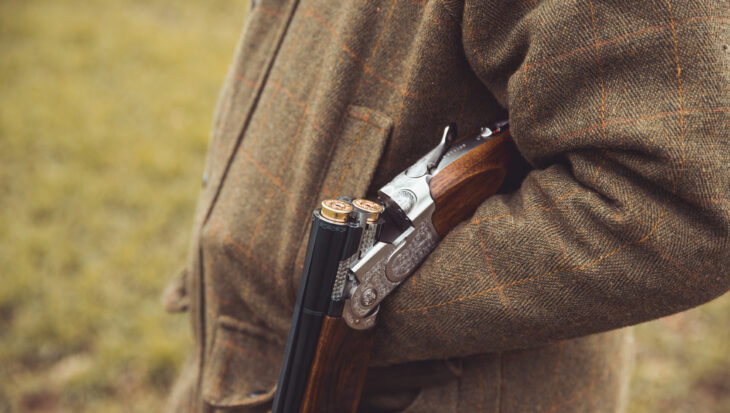Ban on the use of lead shot – finally!
Posted 10 Jul 2025

Posted on the 4th April 2007
National campaign group Animal Aid this week launches Race Horse DeathWatch, a web-based initiative that will make public every on-course Thoroughbred fatality.
The project is announced in the wake of the destruction of 14 horses in just 21 days of racing, and with the notoriously hazardous Grand National meeting due to start next week. Among the recent dead are two Grand National favourites.
Where and how the deaths occur are to be recorded in a publicly accessible database. The names of the trainers, owners, jockeys, together with relevant background, will add to the picture and provide an unprecedented ‘live’ resource for anyone seeking to understand the extent of the carnage occurring on British racecourses. The horse racing authorities have resolutely failed to put such information into the public domain, preferring to dismiss equine fatalities as ‘accidental’ and ‘unexplained’. Even when several horses die at a single meeting, the term ‘statistical blip’ is often deployed.
Animal Aid has produced a series of revealing reports over the last seven years exposing the welfare problems associated with Thoroughbred breeding, racing, training and disposal of commercially ‘unproductive’ horses. Our research indicates that an average of 375 horses are raced to death every year. One-third die on racecourses, while the others are destroyed as a result of training injuries, or are killed because they are no longer commercially viable (1).
The period bracketed by the four-day Cheltenham Festival in mid-March and the Grand National has been identified by Animal Aid as racing’s Killing Season. The two big meetings are themselves particularly hazardous because of crowded fields, long races, a large number of novice horses, and deliberately challenging obstacles.
The first posting of Race Horse DeathWatch shows that two horses died at Cheltenham, and one at Uttoxeter two days later. Four horses were destroyed on March 19 at Wincanton. One week later, four horses were again destroyed during a single day – two each at Plumpton and Stratford. There was another casualty on March 27 at Sedgefield and another the following day at Towcester. The last of the 14 casualties was destroyed April 2 at Kelso.
The victims died as a result of a variety of injuries, including a broken or fractured back, neck, shoulder, pelvis or leg.
Among the dead was Priests Bridge, who crashed and fractured her neck at the second fence in the Glovers Novices Chase (2) at Wincanton. Having recently given birth, she had been out of racing for 1,283 days. It was her first Chase event. Her previous 10 races had been over hurdles (3).
Nil Desperandum was destroyed on March 17 after breaking a hind leg during the 4 mile John Smith’s Midland’s Grand National at Uttoxeter. He was racing only two weeks after being entered into another punishing 4 mile event. Had he not been killed at Uttoxeter, he was scheduled to race just one month later in the Grand National – the most challenging event in the racing calendar.
The first of the 14 horses to die was Little Brick. He broke a shoulder while racing in the William Hill Trophy Handicap Chase. The event organisers had promised smaller fields, after 11 horses perished at the 2006 Festival. But Little Brick was one of 23 horses in the 3 mile-plus race. He had never been tested on a course as difficult as Cheltenham’s and had recently returned from a racecourse absence of 490 days. There is a question as to whether his absence was caused by injury and whether he was still suffering its effects?
Cheltenham claimed its second 2007 Festival victim two days later when Swift Thyne injured his spine after falling in the 4m 1f National Hunt Chase. Three other horses suffered heavy falls in the same event, and the winner collapsed and required oxygen. The race had all the ingredients for a catastrophe: amateur riders, novice horses, a crowded field and an exhaustingly long distance to cover.
Animal Aid is compiling its Race Horse DeathWatch by monitoring every event throughout the racing calendar. It is doing so with the help of a network of racecourse observers.
The Thoroughbred on-course victims since March 13 are as follows:
Says Animal Aid Director Andrew Tyler:
‘There is something very wrong with a “sport” that routinely kills its prize assets while they are still very young – and which aims to hide all evidence of the death and suffering. Animal Aid’s Race Horse DeathWatch will make public, in a timely fashion, racing’s dirty secret. The secret is this: there is no such thing as a harmless flutter. When people bet, they are funding a ruthless, lethal industry.’
Posted 10 Jul 2025

Temperatures are rising and it’s time to get outdoors, enjoy the weather and tuck into some delicious vegan food! Thanks to an abundance of plant-based options now available, there’s an alfresco option for every tastebud...
Posted 09 Jul 2025
